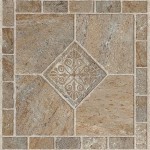Average Cost To Lay Hardwood Flooring: A Comprehensive Guide
Hardwood flooring remains a popular choice for homeowners seeking durability, aesthetic appeal, and increased property value. However, the installation cost can be a significant factor in the decision-making process. Understanding the various elements that contribute to the overall cost of laying hardwood flooring is crucial for budgeting accurately and making informed choices.
This article provides a comprehensive overview of the average cost to lay hardwood flooring, exploring the different types of hardwood, factors impacting installation costs, and potential additional expenses. It aims to equip readers with the knowledge needed to navigate the hardwood flooring installation process effectively.
1. Types of Hardwood and Their Impact on Flooring Costs
The specific type of hardwood selected significantly affects the overall cost of the flooring project. Hardwood flooring generally falls into two main categories: solid hardwood and engineered hardwood. Each offers distinct properties and price points.
Solid Hardwood: Solid hardwood planks are made from a single piece of wood. They are known for their durability, longevity, and ability to be refinished multiple times. Common solid hardwood species include oak, maple, hickory, and walnut. The cost of solid hardwood varies based on species rarity, grain pattern, and grading.
Oak is a widely available and relatively affordable option, making it a popular choice for many homeowners. Maple offers a more subtle grain pattern and is slightly harder than oak, leading to a moderately higher price. Hickory is known for its exceptional hardness and durability, often commanding a higher price than oak and maple. Walnut is a premium hardwood prized for its rich, dark color and distinctive grain, making it one of the more expensive solid hardwood options.
The cost of solid hardwood typically ranges from $5 to $15 per square foot for the material alone. Installation costs add to this baseline.
Engineered Hardwood: Engineered hardwood consists of a thin layer of hardwood veneer bonded to a core of plywood or high-density fiberboard (HDF). This construction makes engineered hardwood more dimensionally stable than solid hardwood, meaning it is less susceptible to expansion and contraction due to moisture and temperature fluctuations. This makes it a suitable option for basements and other areas where moisture levels may be higher.
The cost of engineered hardwood varies depending on the thickness of the veneer, the quality of the core material, and the hardwood species used for the veneer. Engineered hardwood with a thicker veneer can be refinished once or twice, extending its lifespan. Typically, engineered hardwood is less expensive than solid hardwood, ranging from $3 to $10 per square foot for the material.
Beyond these two main types, exotic hardwood species like Brazilian Cherry (Jatoba) and Tigerwood can significantly increase material costs due to their rarity and unique aesthetic qualities. These exotic hardwoods often range from $8 to $20 per square foot or higher.
2. Factors Influencing Hardwood Flooring Installation Costs
Beyond the cost of the materials, several factors impact the overall installation cost. These factors relate to the existing conditions of the subfloor, the complexity of the installation process, and labor costs in the specific geographic region.
Subfloor Preparation: A properly prepared subfloor is essential for a successful hardwood flooring installation. The subfloor must be level, clean, and dry. If the existing subfloor is uneven, damaged, or contaminated, it will need to be repaired or replaced before the hardwood flooring can be installed. Subfloor preparation can involve leveling the existing floor with self-leveling compound, repairing damaged sections with plywood or cement board, and cleaning the surface to remove debris and adhesives. The cost of subfloor preparation can range from $1 to $5 per square foot, depending on the extent of the work required.
Installation Method: The chosen installation method also affects the cost. Solid hardwood flooring is typically nailed or stapled to the subfloor. Engineered hardwood can be installed using various methods, including nailing, stapling, gluing, or floating. A floating installation involves assembling the planks together without attaching them directly to the subfloor. The choice of installation method depends on the type of hardwood, the subfloor material, and the homeowner’s preferences. Nailing or stapling generally requires specialized tools and expertise, adding to the labor cost. Gluing down engineered hardwood can also be labor-intensive and requires specialized adhesives. Floating installations are often the least expensive option, but they may not be suitable for all types of hardwood or subfloors.
Room Size and Complexity: The size of the room and the complexity of the layout influence the amount of labor required for the installation. Larger rooms generally have lower per-square-foot installation costs due to economies of scale. However, rooms with complex layouts, such as those with multiple corners, curves, or doorways, require more precise cutting and fitting, increasing the labor cost. Additionally, obstacles such as stairs, fireplaces, and built-in cabinets can add to the complexity and cost of the installation.
Labor Costs: Labor costs vary significantly depending on the geographic location and the experience level of the installer. In areas with a higher cost of living, labor rates are typically higher. Hiring a reputable and experienced installer is crucial for ensuring a proper installation and avoiding future problems. While it may be tempting to opt for the cheapest installer, doing so can result in poor workmanship, which can ultimately cost more in the long run. Labor costs for hardwood flooring installation typically range from $3 to $8 per square foot.
Removal and Disposal of Existing Flooring: The cost of removing and disposing of existing flooring can add to the overall project cost. The complexity of the removal process depends on the type of existing flooring and how it is attached to the subfloor. Removing carpet is usually relatively straightforward, while removing tile or glued-down flooring can be more time-consuming and labor-intensive. Disposal fees also vary depending on the local regulations and landfill rates. Removal and disposal costs can range from $1 to $3 per square foot.
3. Additional Expenses to Consider
Besides material and installation costs, homeowners should also budget for potential additional expenses associated with hardwood flooring installation. These expenses can include trim and moldings, underlayment, and furniture moving.
Trim and Moldings: Trim and moldings, such as baseboards, quarter-round, and thresholds, are used to cover the gaps between the hardwood flooring and the walls, cabinets, and other surfaces. They provide a finished and polished look to the installation. The cost of trim and moldings depends on the material, style, and quantity required. Hardwood trim and moldings are typically more expensive than MDF or vinyl options. The cost of trim and moldings can range from $1 to $5 per linear foot.
Underlayment: Underlayment is a thin layer of material installed between the subfloor and the hardwood flooring. It provides cushioning, sound insulation, and moisture protection. While not always necessary, underlayment is often recommended, particularly for engineered hardwood installations. The cost of underlayment varies depending on the type and thickness of the material. Foam underlayment is a common and affordable option. Cork underlayment provides excellent sound insulation but is generally more expensive. The cost of underlayment can range from $0.50 to $2 per square foot.
Furniture Moving: Moving furniture out of the room before the installation and back in afterward can be a significant undertaking. Homeowners can choose to move the furniture themselves or hire professional movers. Hiring professional movers can add to the overall cost but can save time and effort, especially for large or heavy furniture. The cost of furniture moving depends on the amount of furniture, the distance it needs to be moved, and the labor rates of the moving company.
Sealer and Finishes: Depending on the type of hardwood and the desired look, the floors may need to be sealed and finished after installation. This can involve applying multiple coats of polyurethane or other protective coatings. This step protects the wood from wear and tear, moisture, and stains. The cost of sealers and finishes, along with the labor to apply them, should be factored into the overall budget.
Contingency Funds: It is always wise to set aside a contingency fund to cover unexpected expenses that may arise during the installation process. These expenses can include unforeseen subfloor repairs, hidden plumbing or electrical issues, or changes in material prices. A contingency fund of 5-10% of the total project cost is typically recommended.
In summary, the average cost to lay hardwood flooring is a multifaceted calculation dependent on the interplay of materials, installation complexities, and regional labor variations. Careful consideration of these factors will empower homeowners to approach their hardwood flooring projects with clarity and financial preparedness.

Cost To Install Hardwood Flooring Floor Fixr

Cost To Install Hardwood Flooring Floor Fixr

Flooring Installation Cost Guide 2025 Average Prices By Type

Average Flooring Cost For Hardwood Installation Cmo

Hardwood Flooring Installation Costs 2024

How Much Does It Cost To Install Wide Plank Floors Floor Supply

Hardwood Flooring Installation In Toronto How Much Does It Cost The Reno Superstore

Cost To Remove Hardwood Floors Mk Remodeling

What Is The Average Cost Of Wood Tile Flooring

Flooring Installation Cost Guide 2025 Average Prices By Type








